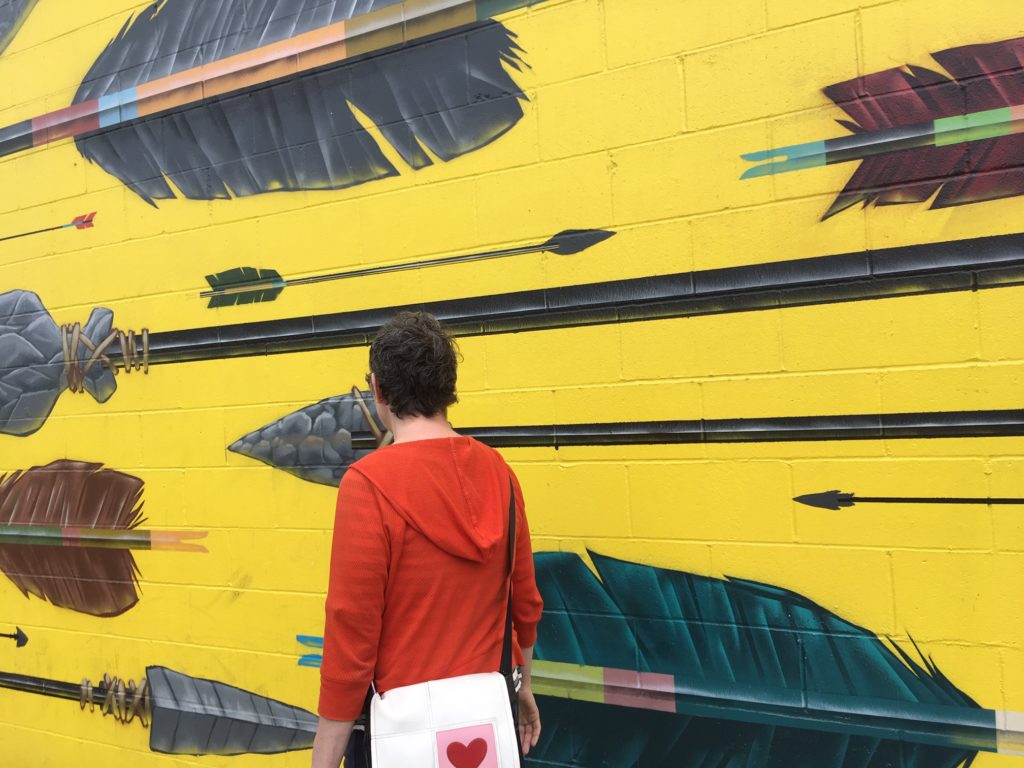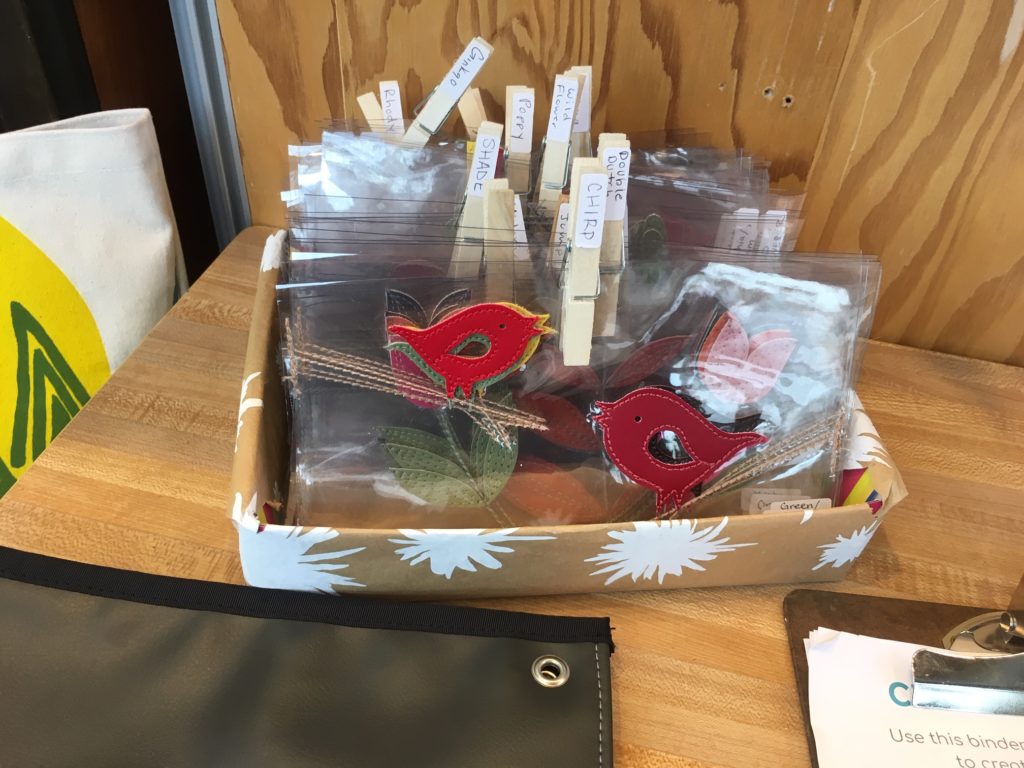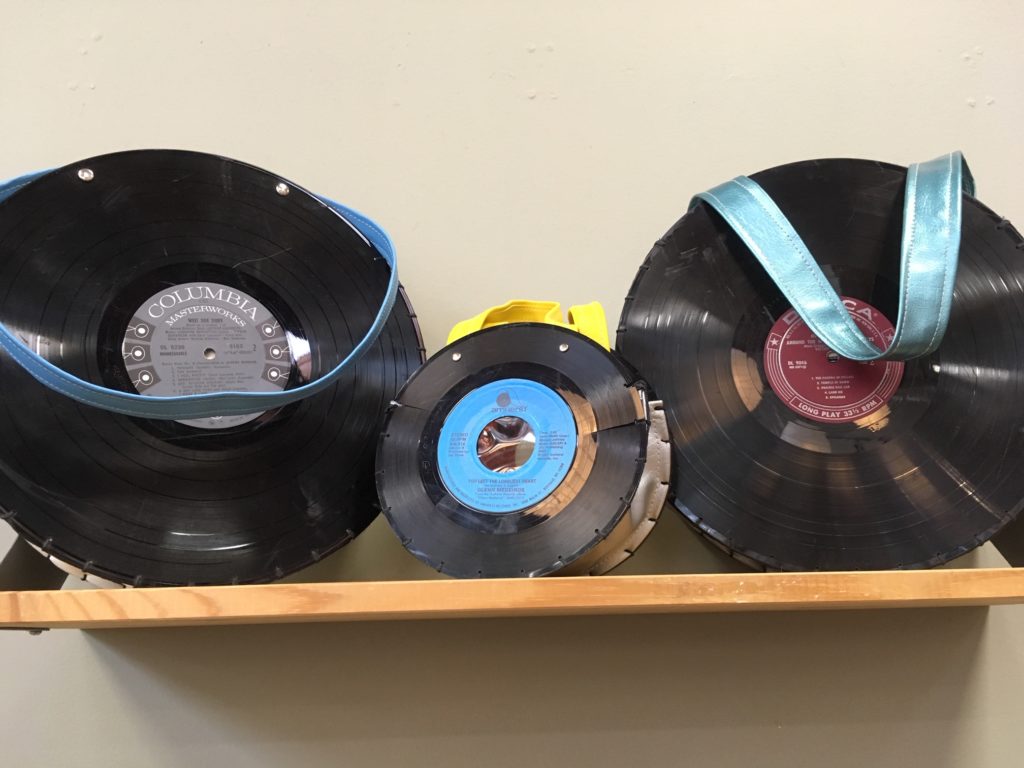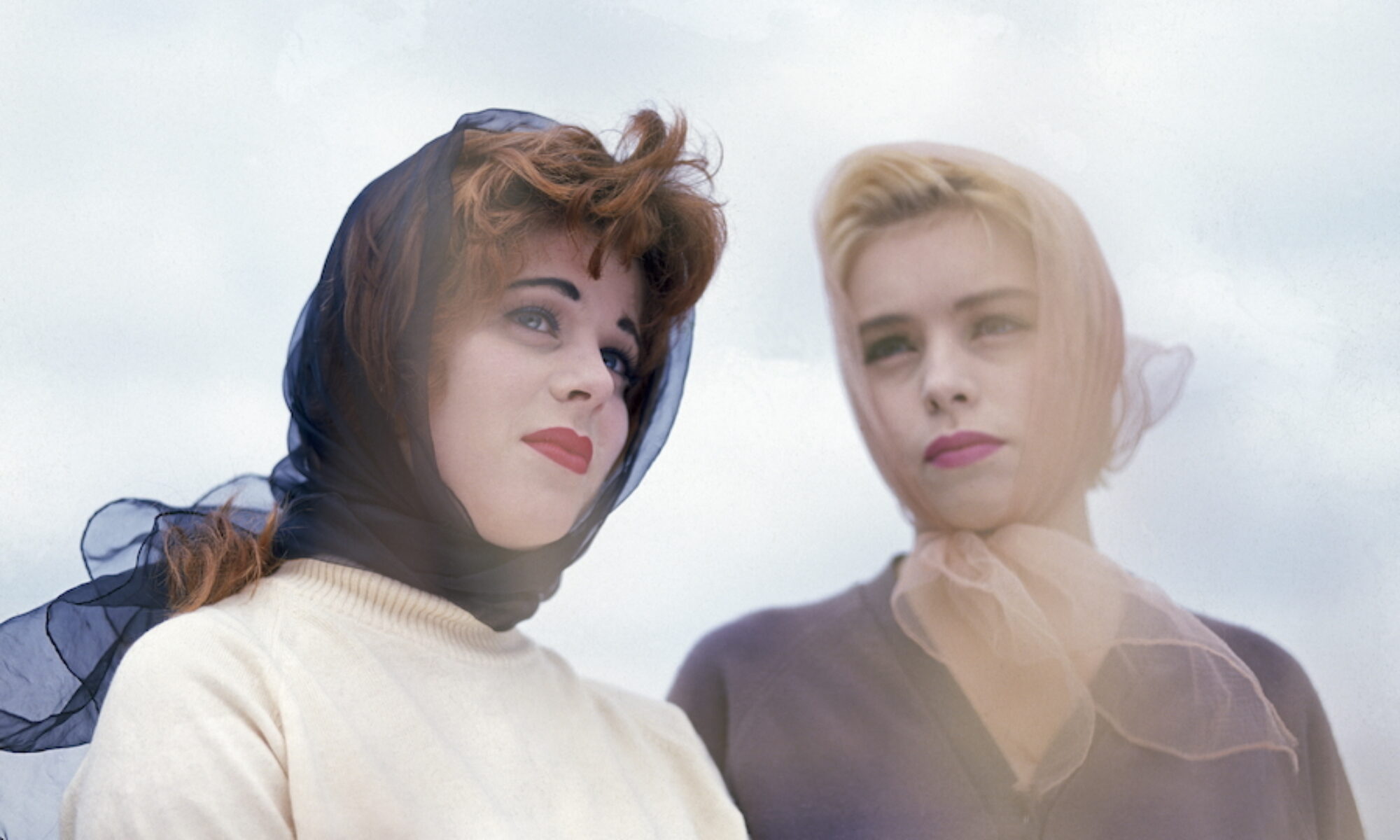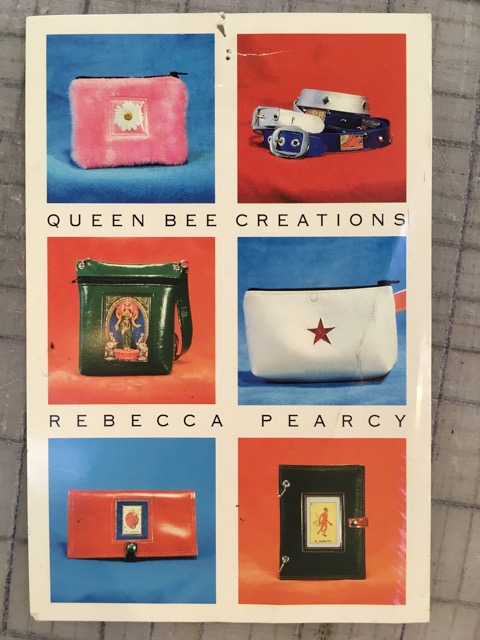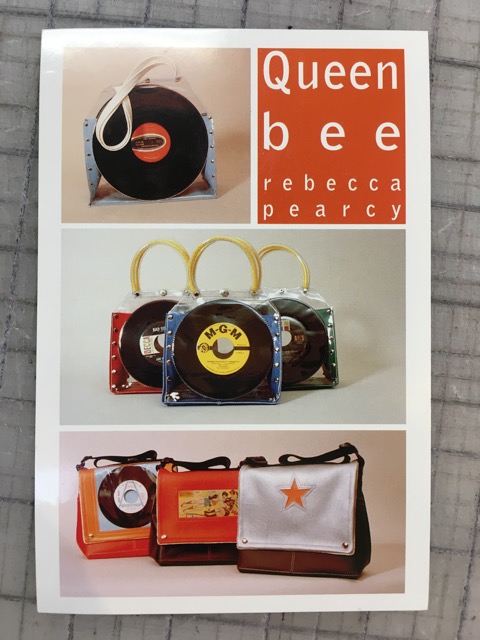it’s hard to leave the house in portland, oregon, without seeing an iconic queen bee bag. designer rebecca pearcy started making them (along with wallets, guitar straps and more!) in the 1990s and they were everywhere in the indie punk scene: durable, beautiful and waterproof! chickfactor’s editors are big fans. as rebecca gets ready to close the queen bee shop and move on to her textile business, we wanted to get the scoop. (she also makes music!) interview by gail
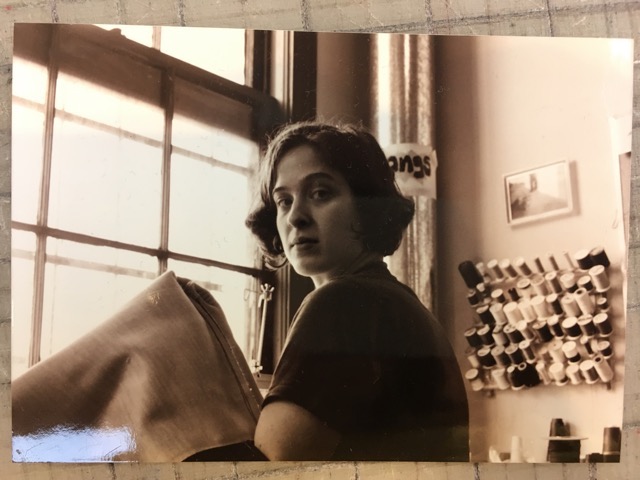
chickfactor: I bought my first queen bee bag at dumpster values in olympia in the late ’90s: a tarot card bag and wallet.
rebecca pearcy: I love that you bought your first queen bee at dumpster values. I love kanako and that store. we started our businesses around the same time, and dumpster values sold queen bee plus lots of clothing I used to make for a long time.
cf: so what’s the deal? why are you closing down queen bee? it seems very punk rock and anti-capitalist to do such a thing.
well, I suppose it is kind of punk rock, though I hadn’t thought about it in those terms till now. I do still plan to try and carve an income out of my creativity, but hoping to expand into realms that don’t necessarily involve making and selling stuff. workshops, and more community-building / sharing skills type of work. but to your question, why: I’ve been running queen bee for almost 24 years. longer, really, if you count the time I was doing it before I went legit and got a business license. I’ve changed, the world has changed, and I’m ready to shift toward the stuff that I find really inspiring these days. queen bee has become such its own entity, that it has taken a long time for me to get to the point where I feel truly ready to dismantle it and move on. it has been a big part of my identity, but I don’t identify with it so much anymore. I want the work I’m doing to be more representative of who I am now, and to keep evolving as a creative person. it’s funny because many people in my life, especially other business owners are telling me how brave it is to do what I’m doing and I guess it is. It is a big leap of faith to let go of something that is familiar, even if it is super challenging. but that’s how queen bee started, with a leap into the unknown, so I’m just doing that again, but at a very different place in my life than I was then.
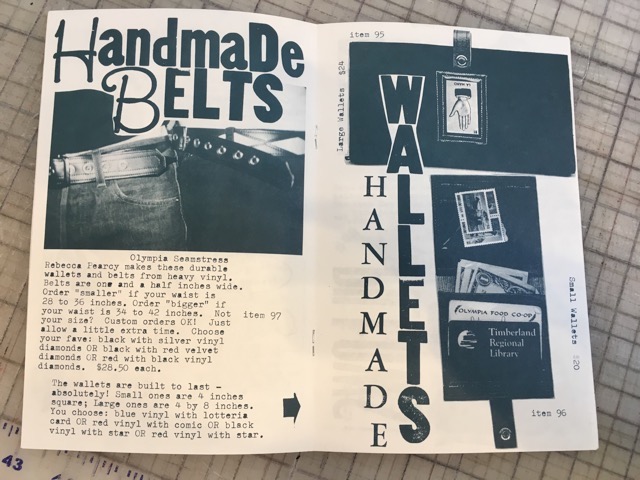
cf: tell us about the person you were when you started queen bee, how you have changed, and how the company has changed since then.
I was living in olympia when I started queen bee. it’s hard to remember the timing of everything, because I was always sewing and making stuff and selling it. I was making stuff in my bedroom wherever I lived, and selling it at evergreen or at dumpster values, or at a riot grrrl convention or what have you. deciding to live in olympia after graduating from evergreen really changed my life. I thought I might like to move to san francisco but I quickly became intimidated by the challenge of finding housing there (even then, in the mid-’90s). so I decided that if I could find a job in olympia, I’d stay there. I got a barista job at batdorf & bronson and ended up living there for 11 years total. I’m so glad I got to live there, and become part of a real community, start my business, and play music there. so when I started queen bee I was really beginning to become part of life downtown: I lived at the abc house (a big land-trust communal living house on the west side, amazing experience, live shows and dance parties in the basement, fantastic housemates, affordable rent, good times). I started off by setting up my sewing station in the “rose room” at the abc house, but quickly realized I wanted to have a separate studio where I could work. my first studio was in the capitol theater building and it was like $100/month or something! a little while after being there, I got a call from stella marrs inviting me to move to a studio alongside her, nikki mcclure, amber bell, community print, khaela maricich, and k records. that was a dreamy situation. so many creative people, women in particular, working in the same building, bumping up against each other. very inspiring and special. ¶ back then, I was a scrappy, creative woman who was just living life in the hotbed of olympia awesomeness. I was young and writing songs, performing and going to movies and seeing shows and participating in olympia life. It was really great. In many ways I am still that same person. older, obviously, and I’m now married and have a 9-year old son, so my time and energy is pretty well split between work and family. I don’t have time to see all (or any) of the movies, or shows. with queen bee, I started off just by myself, and over time got too busy to do it alone. over the years, we’ve gone through so many stages, growing, contracting, adjusting, weathering the recession, etc. I’ve been through a lot and am pretty tired, honestly. ready to downsize to just me again and recalibrate to a new direction that’s better suited to where I’m at now and what I need and want as a 46-year-old woman. when queen bee started, the internet wasn’t a thing—even in that one way, so much has changed, it’s wild. I’ve learned so much, running this business—I hope I’ve become a better and better leader. things started off pretty casual and over the years so much of what has developed has been due to the folks I’ve hired to work here—it is because of their brilliance that we are so well organized and created systems to make things run smoothly. it’s great—that has been a big change! left to my own devices, things aren’t quite so orderly 🙂

cf: what was something you learned from attending evergreen that has stayed with you and made you successful?
I did lots of independent study at evergreen, so I think that helped to prepare me for being a creative small business owner. you really have to just make so many decisions, all the time, when you’re running your own show, so it’s very beneficial to be an independent thinker and just problem solve the shit out of everything. and just the value of creativity at a place like evergreen—the value of looking at something from your own point of view and bringing that to the table—those are great qualities to have as an entrepreneur.
cf: what was it that inspired you to make this particular design? how did that change over time? what was the most popular?
well, one of the first things I designed that became part of queen bee was the wonder wallet. that came out of me just needing a new wallet and since I’m inclined to just DIY as much as possible, I made the first wallet with shiny black vinyl fabric with a vintage wonder woman comic laminated and stitched to the front. I don’t even know where the original inspiration for that came from. but I liked working with the vinyl fabric and faux-leathers and stuff. I was also making bags and stuff out of thrifted fabrics, vintage curtains, fake fur, and the like. I liked to shop for tough fabrics at auto and marine supply stores. I would drive to tacoma and seattle to hit comic books stores and buy all their vintage wonder woman comics, record stores and thrift stores for records to make my LP tote and 45 rpm bags with, and archie mcphee for packs and packs of loteria cards. after making bags with the comics, mexican loteria cards and kitschy stuff like that, I started developing my own appliqué designs. starting off with a simple star cutout and going from there. faux-leather, like real leather, is fun to work with because unlike woven fabrics, it doesn’t fray, so you can just cut and sew without having to finish the edges. that enabled me to really go crazy with the appliqué motifs and we always did fun contrasting stitching and stuff. over time I developed a whole line of waxed canvas bags, and heavier canvas in fun colors, and then printing onto fabric and creating the rebecca bearcy textiles line. ¶ the most popular designs have been the truckette messenger bag and the maximo wallet. they are the classic queen bee items that you see people carrying everywhere (that’s the truckette, the little sister to the trucker which is named that b/c the first ones I made were out of truck tarp fabric).
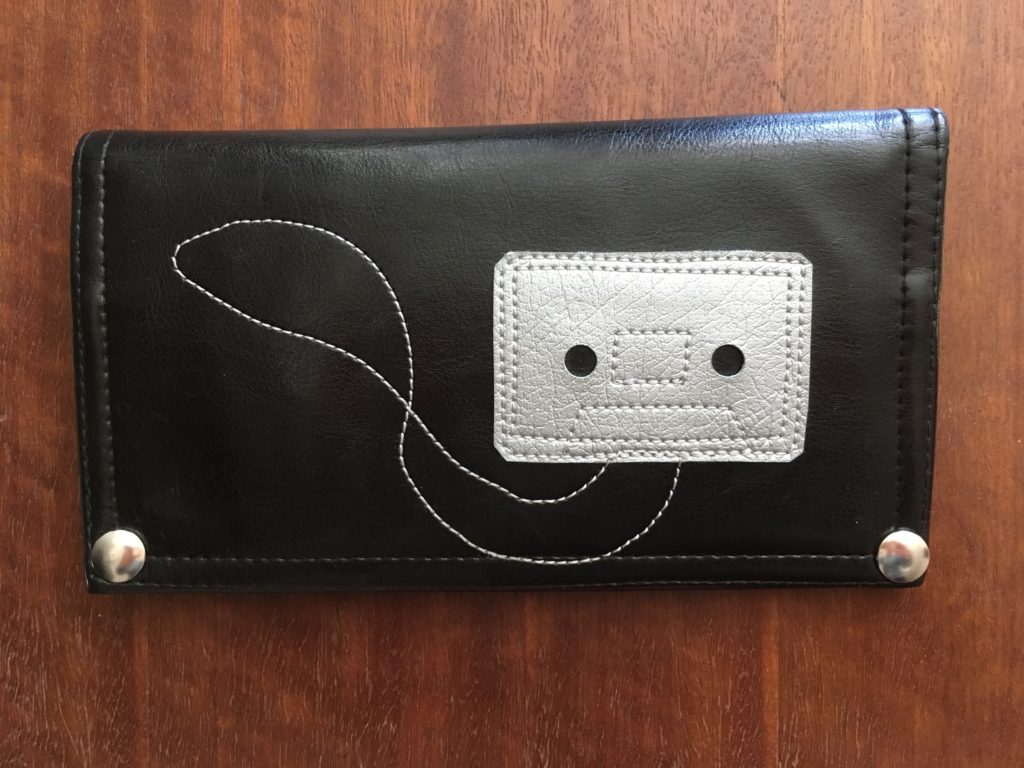
cf: will you be moving out of the williams shop?
yes. my lease is up at the end of the year. I’ll be moving to a studio on 15th & SE ankeny, but won’t have a retail storefront. so I’m planning to do more events, pop ups and folks can schedule to come shop at my studio when I’m ready.
cf: what’s the last day folks can visit the shop? and order online?
we don’t know what the closing date for the store will be—we are playing it by ear. It will come when we really don’t have much left to sell, honestly! It will probably be in december sometime. for online orders we will have to cut them off sometime in the next few weeks, possibly early december. when we announced the closure, we got a ton of orders, so the wait time is currently like 8-10 weeks. we’re very busy and will have to stop taking orders when we can’t accommodate the production of them anymore!
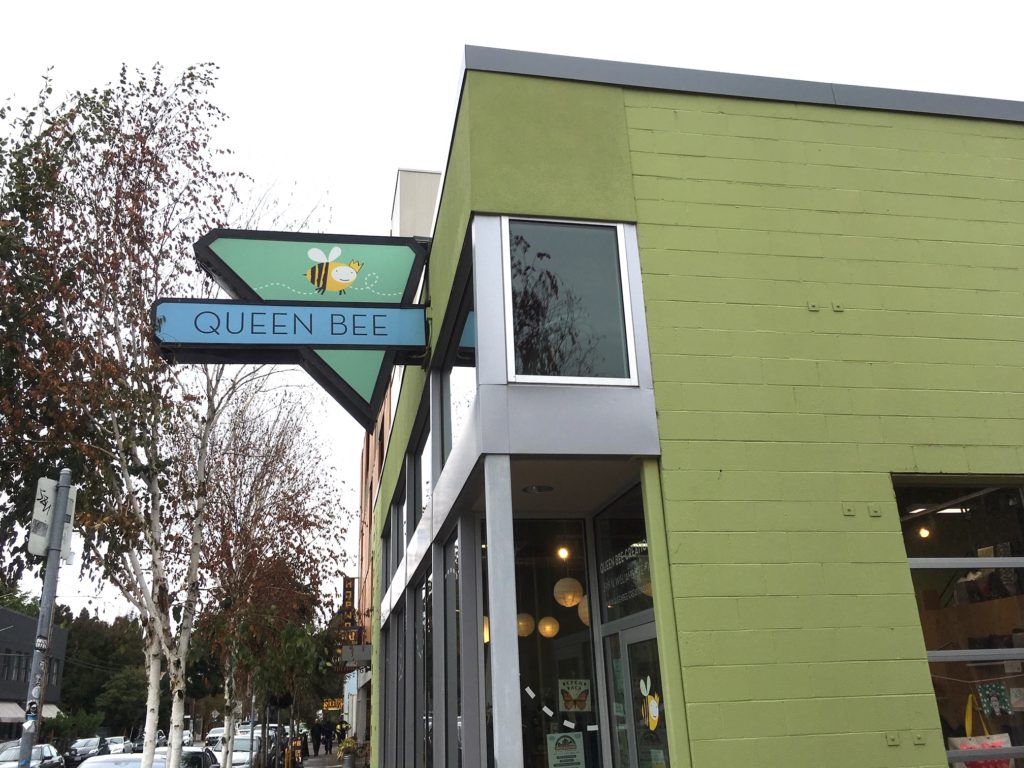
cf: will you make bags for your other brand: rebecca pearcy textiles?
yes, but not nearly as much of a focus as it is for queen bee. I did design the lola convertible tote/backpack for the rebecca pearcy line, so that is cool. and I have ideas for other things. but I’m pretty into designing and making clothing right now, so will be developing that more, as well as continuing some home decor items and other accessories. whatever I feel like!
cf: what are your personal favorites?
well, I kind of always love whatever is newest or what I just designed! go figure. so, the lola convertible, that’s my daily bag. I also love the snippet wallet (tiny), and the maximo wallet (big), the becca backpack, and the ramona tote. and the marlo purse. so many! those are some of my faves.
cf: do you have any rock star fans? have queen bee bags become part of popular culture in some way?
hmm, I don’t know if we have any rock star fans! there are notable folks over the years who have bought from us. we made some custom truckers for wilco to sell at their shows a few years back. and word has it that cheryl strayed bought a bag to give to reese witherspoon. lots of folks in the indie northwest scene have been customers. I think the biggest way we’ve become part of popular culture is that people think the portlandia ‘put a bird on it’ skit was inspired by us. and I do think queen bee is a part of portland, olympia, seattle, PNW culture. we’ve been around long enough and are recognizable enough to fill that role.
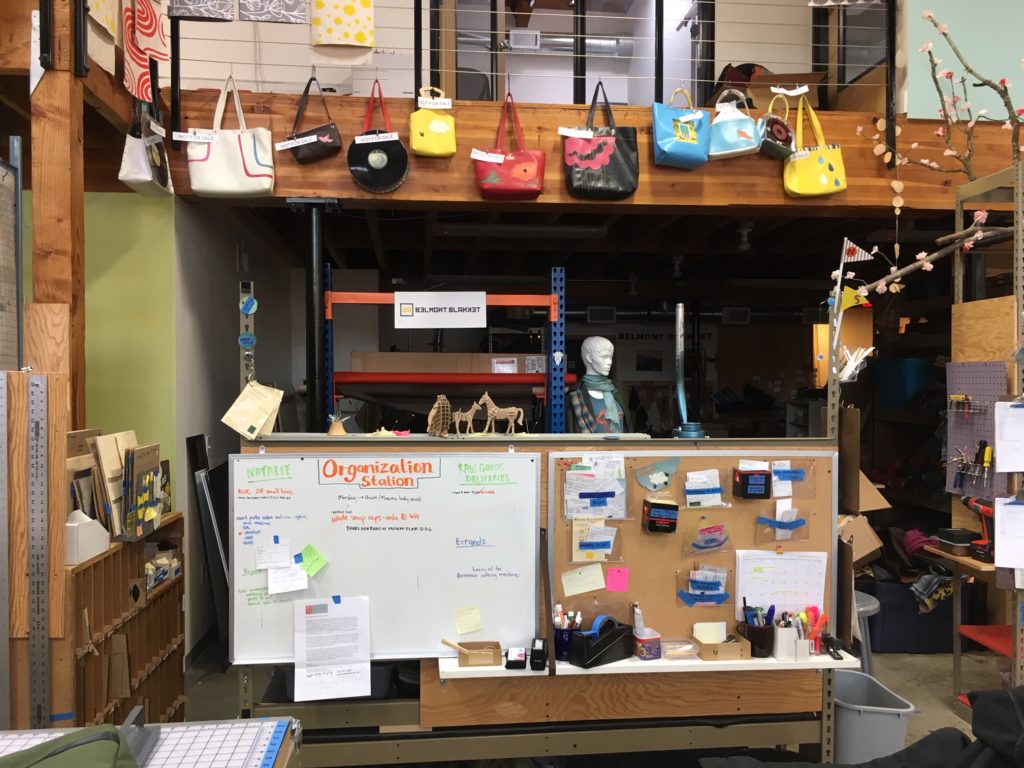
cf: what do you think makes them so popular and beloved?
I see them everywhere I go! it’s crazy. I don’t know exactly what make them so beloved, but I’m guessing: they are a nice combination of practical and stylish. they’re made for everyday use, and folks in the PNW tend to be on the practical side, as opposed to super fashiony. I mean, if it starts raining heavily, you don’t really want to have to worry about your bag. they are very identifiable and so people notice them and ask about them and their popularity spreads. the truckette, our most popular bag of all time, I think it just the right size, you know? not too big or small. and it has a satisfyingly square shape, a nice flat bottom so it can sit on a surface easily, it holds its own shape.
cf: how many bags do you think queen bee has made?
thousands and thousands! I wish I knew the actual number.
cf: how many employees have you had/do you have now?
I have 6 employees currently. at our biggest I think I had around 15 or so. I have worked with so many great people over the years. that’s one of the hardest parts about closing, is losing this little work family. they are all wonderful and I hope they all get to work somewhere where they’ll be appreciated.
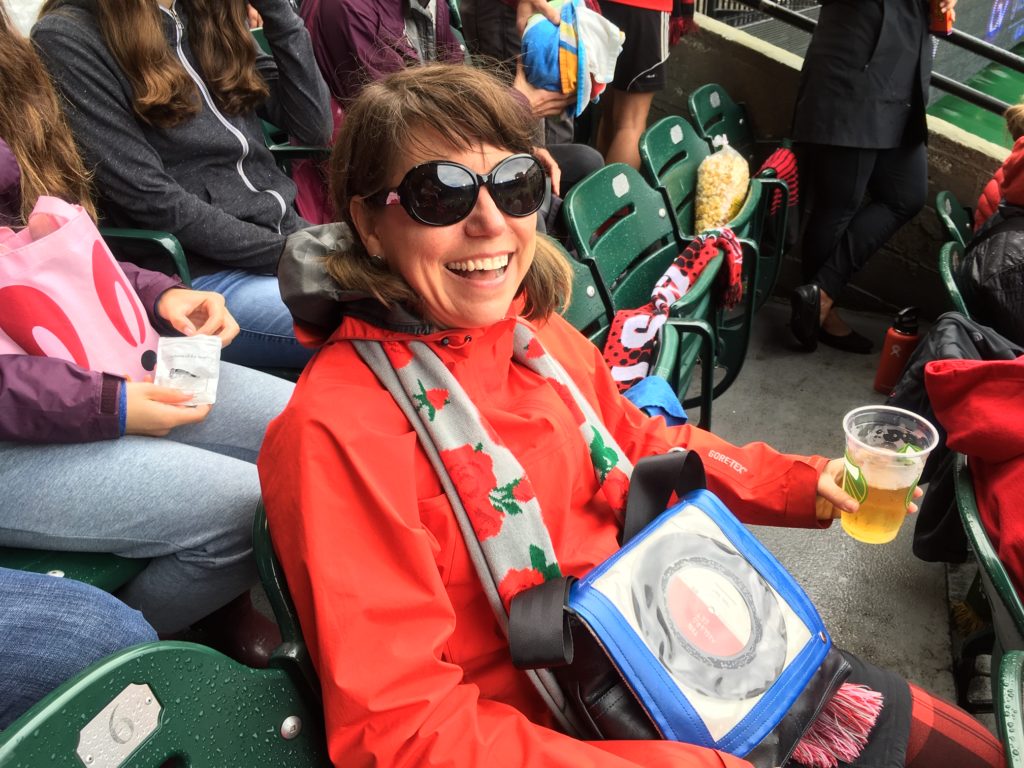
cf: tell us about the rebecca pearcy line and your future plans.
in 1997 I did an apprenticeship at the fabric workshop in philadelphia, where I learned how to design & print patterns in repeat onto fabric. It was like a door opening into the realm of what really clicks with me. at the heart of what I love to do, is my love for fabric, color, and print. so getting to create the pattern that is printed onto the fabric and then getting to design what to make out of that fabric, and then MAKE it, was just taking me deeper into what I loved. so after that experience, I really wanted to start to print my own fabric and create goods from that. printing in repeat on yardage of fabric requires a big table a specific set up so it took me a few years to figure that out, but when I did I founded rebecca pearcy textiles. I’ve been running that brand for a few years now, but it has always taken a back seat to queen bee. part of this transition is my desire to turn my focus and energy onto the project that I feel most inspired and excited about, which is the rebecca pearcy line. this brand’s focus is handprinted, silkscreened natural fiber fabrics, made up into home decor, soft goods, accessories, and apparel. clothing is really my favorite thing to make (I make most of my own wardrobe) but it always seemed too complicated to make a business out of clothing design, but I’m dipping my toes into that realm—apparently I just can’t not do it. I’m excited to explore that and whatever else is inspiring to me. this is an opportunity for me to develop a new path and see where my creativity leads me! I’ll be going back to working solo for the time being, while I get settled into a new routine, working at a new studio, selling through my website and doing some in-person events, pop-ups, that type of thing.
cf: merci, rebecca!
